Spike Island, Cobh
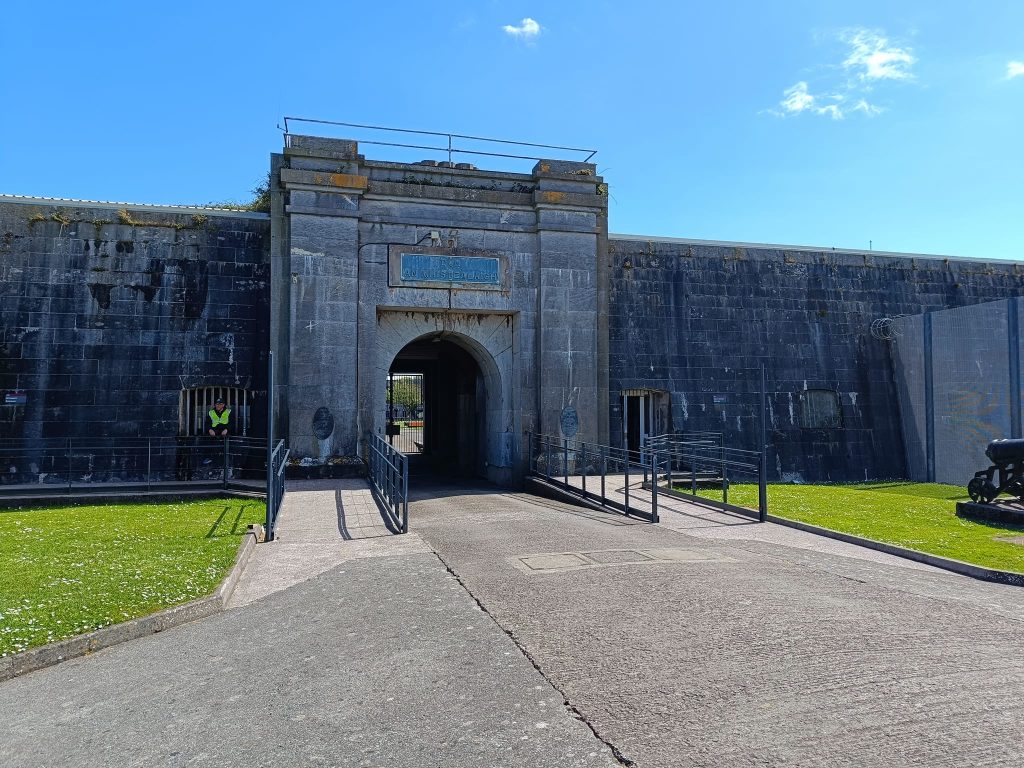
Arrival by Ferry
There’s something undeniably thrilling about embarking on an island adventure, and Spike Island off the coast of Cobh did not disappoint. My travels around Ireland led me to this historical gem, a place where every stone seems to whisper tales of the past. Accessible only by ferry, the journey itself sets the tone for the unique experience that awaits.
The ferry and ticketing counter is at J.F Kennedy Pier in Cobh. You cannot miss this pier as it is right in the heart of a small town. You can get the tickets from the counter but I would recommend that you buy tickets online. The tickets are sold based on a date and time, there is a limit to how many people the ferry can take. You have to follow the date and time in the ticket to go to the island but can take any ferry back.
Also to note there is a lot of walking and some hiking in the island. Be prepared with the right clothing and shoes. There quite a steep hill from the pier to the gate of the fort. It is a fort after all and the hill does help with defences.
First Impressions and Guided Tour
As the ferry gently cut through the waters, the sight of Spike Island grew larger on the horizon, beckoning with its storied past. Upon arrival, I joined a guided tour, eager to soak in all the island had to offer. The guided tour is about 40 minutes. The guide will start to talk about safety in the island, which I find strange and yet re-assuring. Some parts of the island is in ruins and it’s not easy to get to a hospital from the Island. If you have been here before you can skip the guided tour.
Our guide, whose passion for the island’s history was palpable, led us through a narrative that spanned centuries, from ancient monastic settlements to its time as a formidable fortress and a notorious prison. The guided tour starts from the pier. We were making our way up the hill to the fort and made frequent stops for her to talk. The guided tour ended between the inner and outer walls of the fort. After that we were let go to wonder around.
Exploring Fort Mitchel
The first stop on our tour was the 18th-century fortress, Fort Mitchel. Walking through its vast, imposing walls, I could almost hear the clinking of chains and the muffled conversations of prisoners who once languished here. The fort’s architecture is a testament to the strategic importance it once held, designed to defend against invasions that never came. Our guide pointed out various features, such as the gun emplacements and the bastions, each with its own fascinating history.
I was able to walk on the parapet on the walls opposite the entrance of the fort. This is where the naval guns placed to protect Port of Cork. Apparently this is the second largest natural harbour, largest being Sydney Harbour. There is a path to the right side of the fort, past tunnels where a large 6 inch gun can be seen close up.
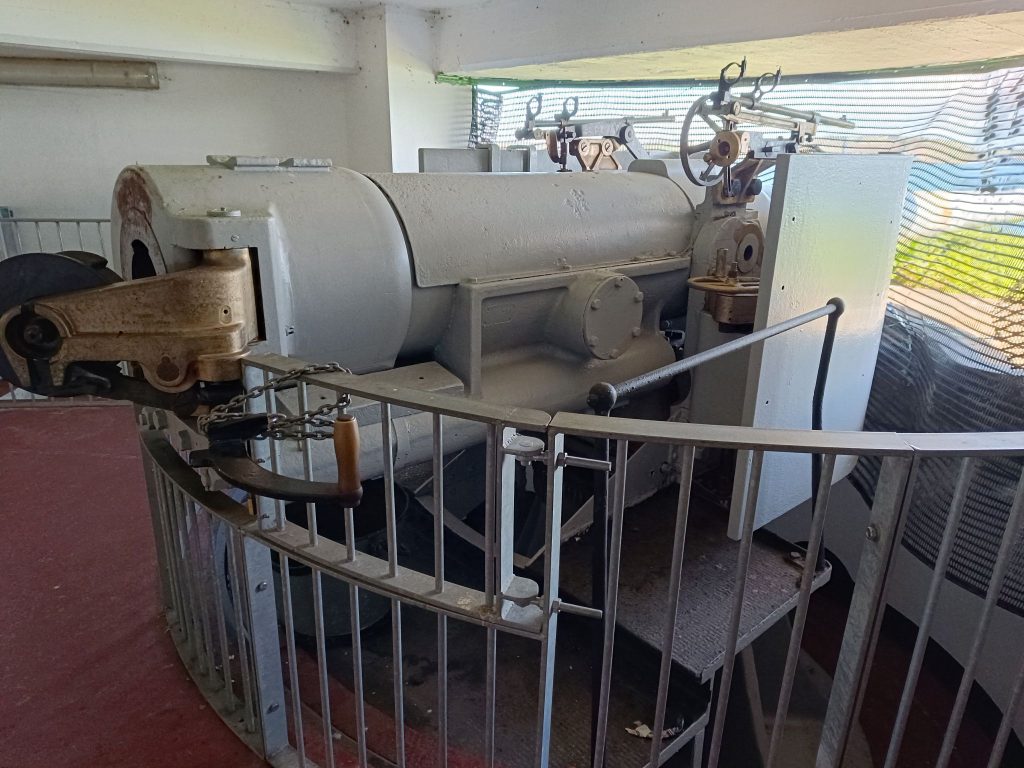
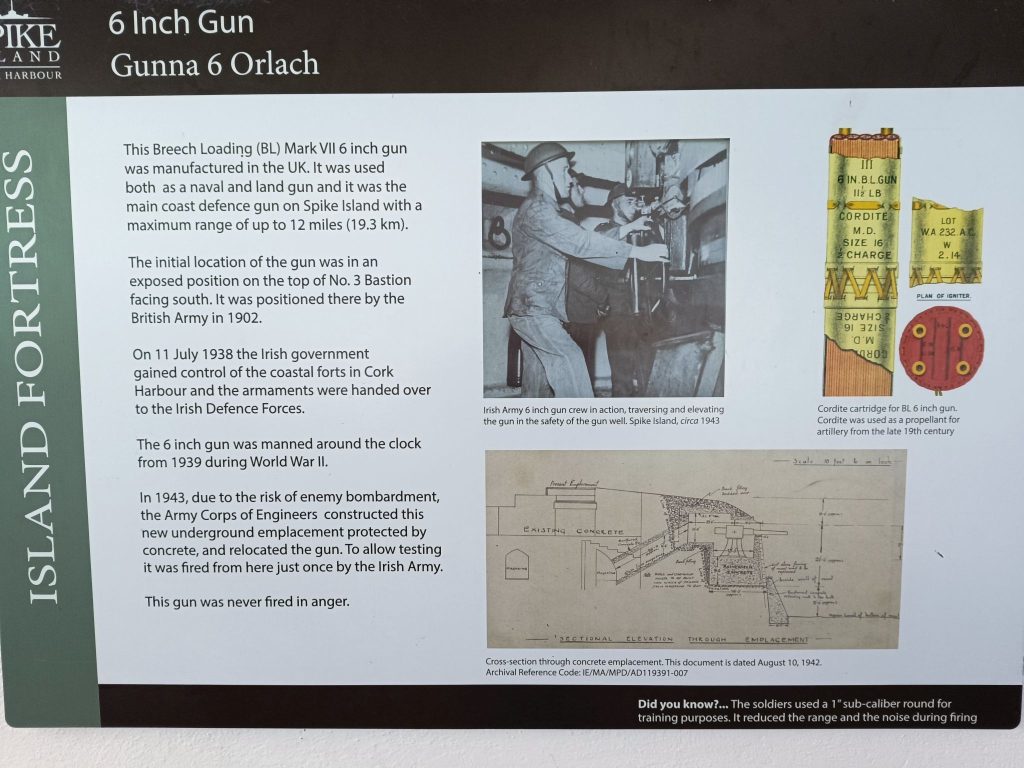
The Prison Cells and Their Stories
Next, we explored the island’s prison cells, which housed convicts during the 19th and 20th centuries. Standing in the dimly lit cells, it was impossible not to feel a chill as the guide recounted tales of the infamous inmates and the harsh conditions they endured. The most harrowing stories were those of the juvenile inmates, young boys sent to Spike Island for minor offenses, facing a life of hard labor and punishment. It was a sobering reminder of the island’s dark past.
Serene Open Spaces
But Spike Island isn’t all gloom and doom. We ventured into the green, open spaces that offered stunning views of the surrounding waters and the picturesque town of Cobh. These areas, once training grounds for soldiers, now provide a serene contrast to the more somber sites.
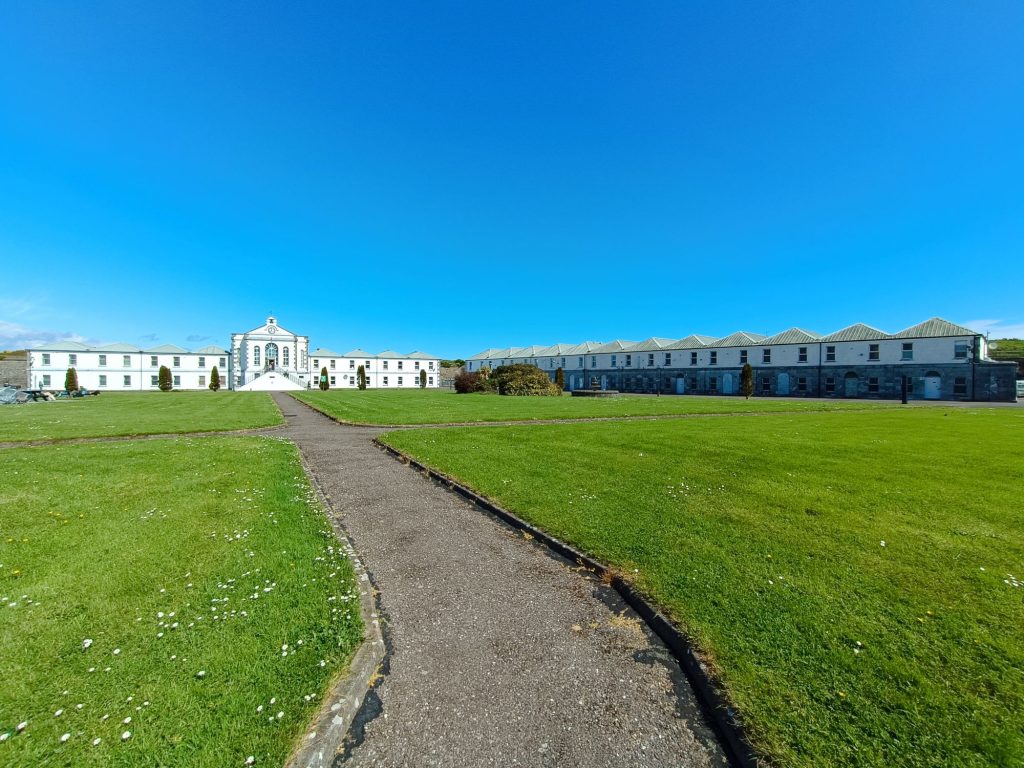
The Story of Little Nellie
One of the most touching stories associated with Spike Island is that of Little Nellie, or Ellen Organ. Born in 1903, she moved to Spike Island with her family when her father was stationed there. Despite her young age, Little Nellie displayed an extraordinary spiritual awareness and devotion. Her deep faith and mystical experiences caught the attention of the Sisters of the Good Shepherd, who took her into their care after her mother passed away. She is a sickly child. It is claimed that she developed a mysterious awareness of the Blessed Sacrament and begin go claim that she has seen visions. She had ask to receive the Holy Communion as she was dying of Tuberculosis. Back then, Holy Communion is only given to children after 12 years old.
Little Nellie’s story reached the Vatican and moved Pope Pius X, who was contemplating lowering the age for First Holy Communion. Inspired by her devotion, he decreed that children could receive Communion at the age of seven instead of twelve. This change has since impacted millions of Catholic children worldwide.
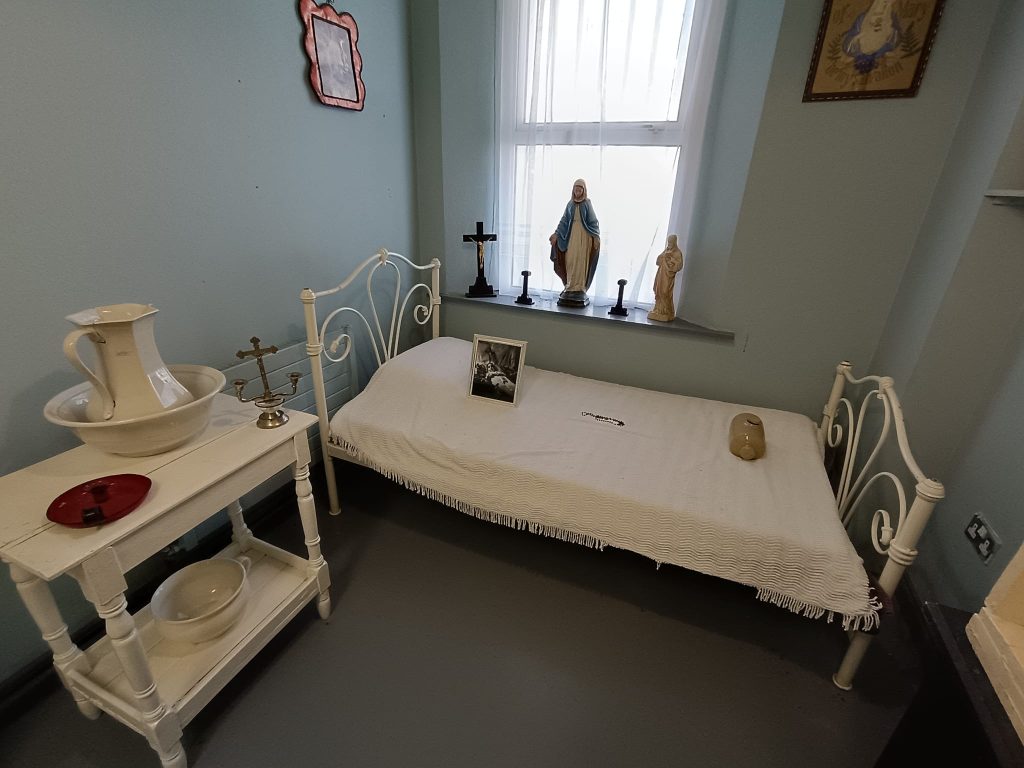
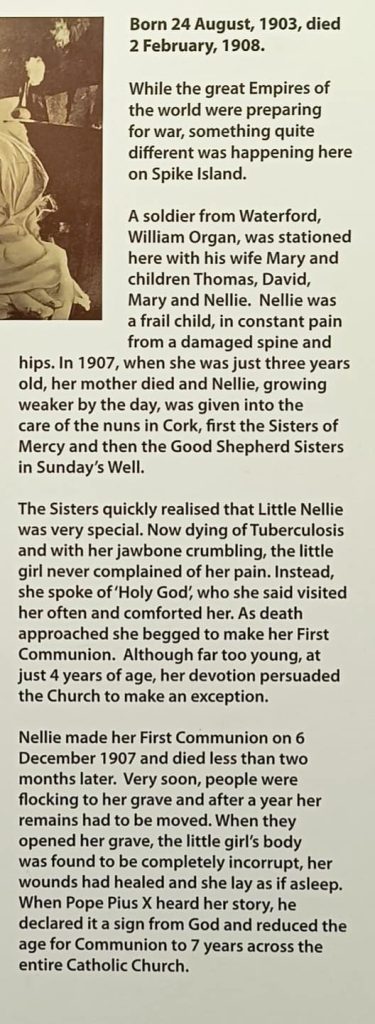
The 1985 Youth Prison Riot
One of the most dramatic events in Spike Island’s history was the riot that took place in August 1985. It was a night like any other in the island’s youth prison when an argument quickly escalated, leading to a full-blown riot. The prisoners, armed with makeshift weapons, took control of the island, setting buildings on fire, including their own accommodation block and the records room. The prison officers had to flee for their safety, and the island residents found themselves in a precarious situation.
The Gardaí (Irish Police) were dispatched from Cobh but faced overwhelming opposition. The riot continued for hours, with prisoners climbing on top of the fort’s Mitchel Hall, where they remained for most of the next day. Eventually, the situation de-escalated, and the prisoners surrendered by the end of the next afternoon. Fortunately, no one was seriously injured, but the riot led to significant changes in the prison’s infrastructure, including the construction of formal prison cells.
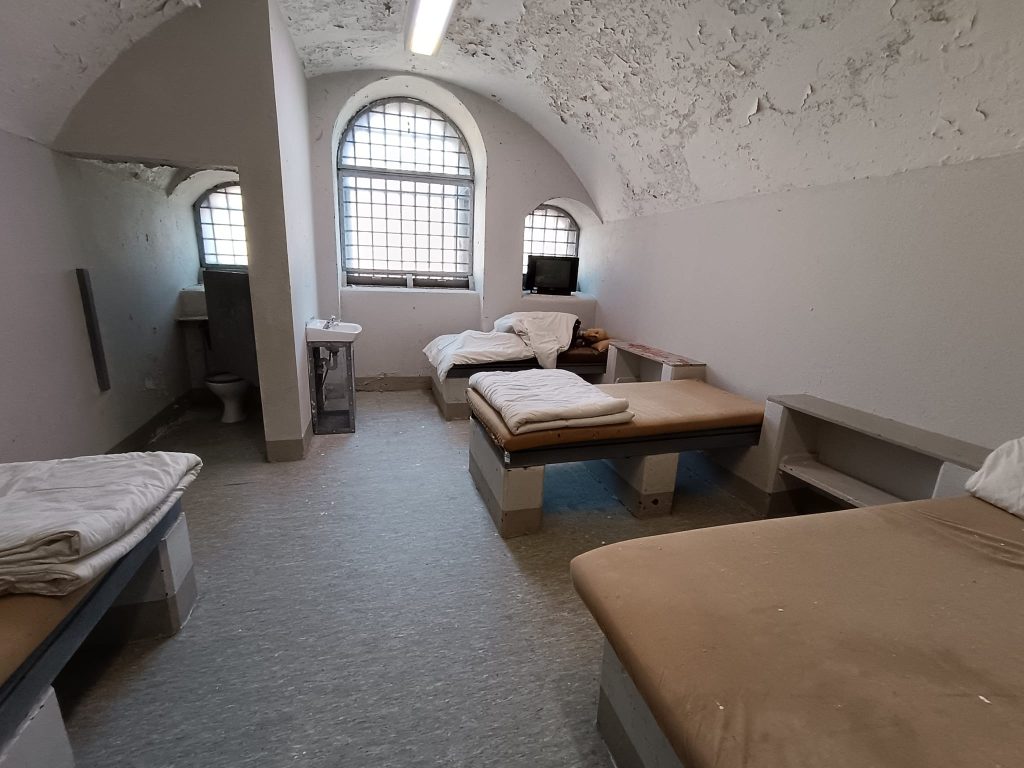
Museum of Army and Navy Equipment (Gun Park)
One of the highlights of my trip was visiting the museum that showcases an impressive collection of army and navy equipment. It is called the gun park and the entrance is situated beside the cafe. As we entered the museum, I was immediately struck by the array of artifacts on display, each telling a unique story of Ireland’s military history. The collection includes uniforms, weapons, and equipment used by soldiers and sailors who served on Spike Island and beyond.
They have guns from late 1700’s all the way to modern Bofors 40mm with the fire control units. It is open and spacious, a lot of take in. I could spend a lot of time here had it not for the kids screaming to go home.
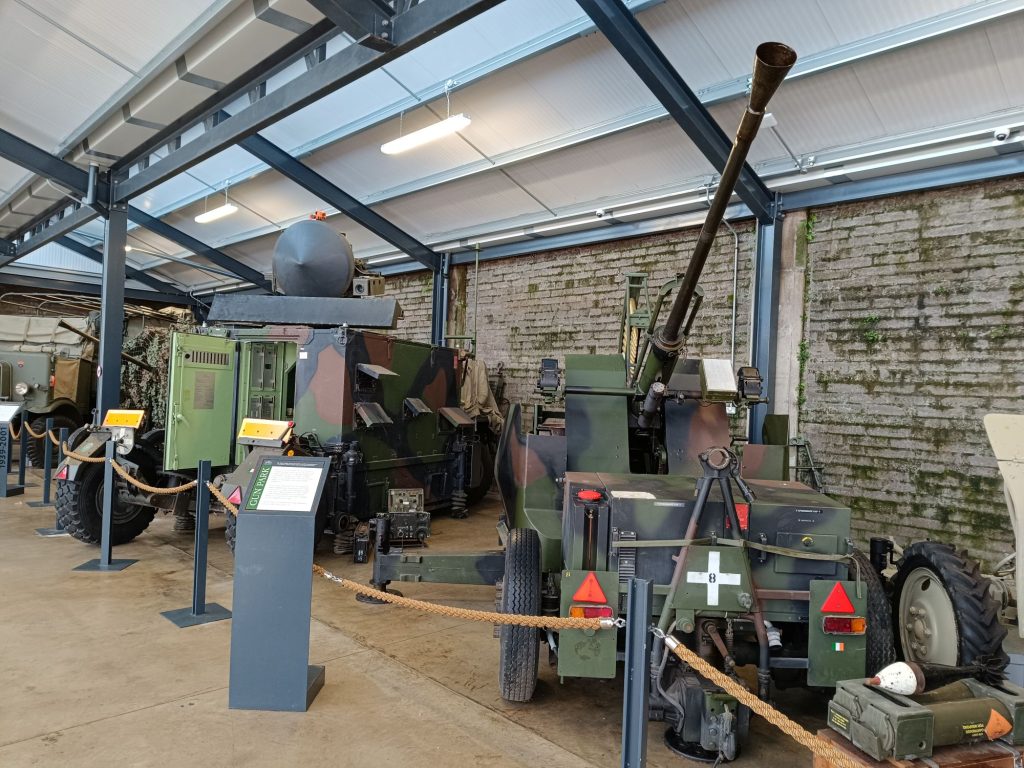
Conclusion
In conclusion, if you ever find yourself in Ireland, make sure to take that ferry to Spike Island. It’s a trip that promises to be as enlightening as it is enchanting.